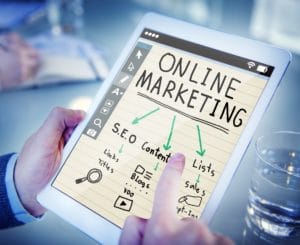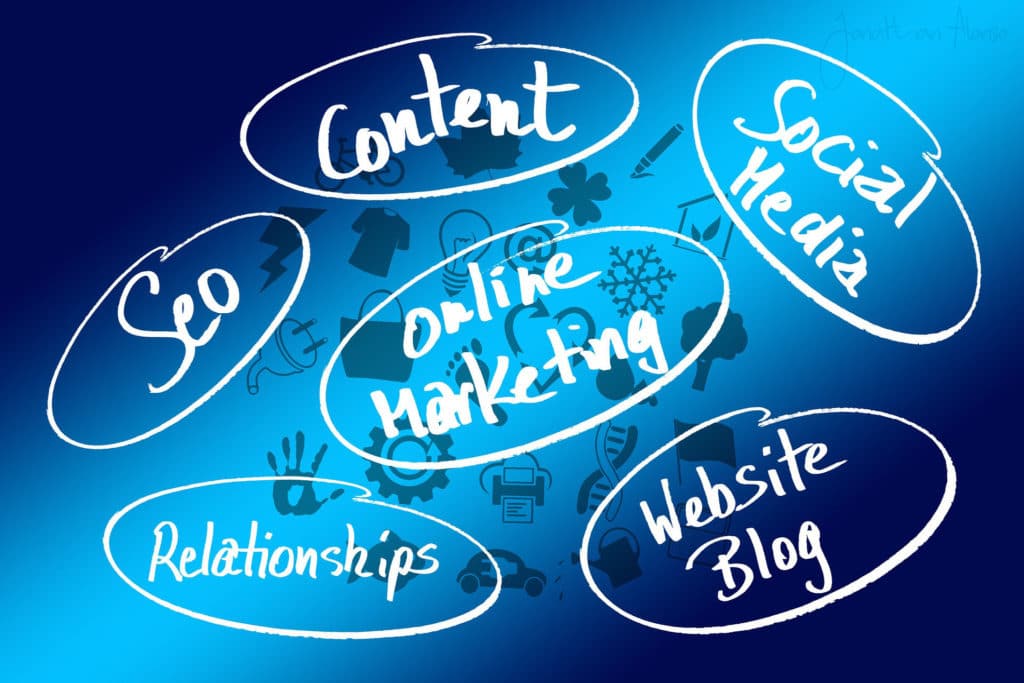Unlock the Secret to Explosive Growth with Relationship Marketing: Say Goodbye to Sales and Marketing Conflicts!
In 2023, the lines between sales and marketing have become even more blurred, but the importance of a cohesive approach remains paramount. While some still argue that sales and marketing are two separate entities, the truth is they must work together to achieve the common goal of bringing in new prospects, customers, and repeat business.
As a marketing professional, I believe that the best approach is for sales and marketing to function as one unified team, utilizing each other’s unique strengths to drive growth and achieve bottom-line results. With over 50 types of marketing strategies available, there are countless opportunities to connect with customers, build relationships, and create mutual benefits for both the buyer and the business.
In this article, I will delve deeper into the relationship between sales and marketing, with a particular focus on the critical factor of relationship marketing. Building and maintaining strong customer relationships is essential for overcoming objections, driving action, and minimizing buyer’s remorse.
In the digital age of 2023, simply pushing products with generic advertisements and a “BUY NOW” button will no longer cut it. To be successful, businesses must prioritize the customer experience and ensure that it is at the forefront of their sales and marketing efforts. By understanding the definitions of sales and marketing and their relationship to each other, businesses can create a cohesive and effective approach that drives growth and success.
Definitions of Sales and Marketing

What is Marketing?
Marketing is a systematic process covering everything from industry reach, and psychological profiling, to eventually finding persuasive ways to compel a prospect toward your brand and eventual sale.
History of Marketing – Timeline
- 1450 – Print advertising introduction made it possible for retailers to create brochures and flyers
- 1730 – First magazines were developed and released.
- 1839 – Posters, shortly after the country of France banned posters on private property.
- 1967 – Companies began renting billboards for advertising.
- 1922 – Companies began purchasing advertising on the radio.
- 1941 – TV was created in the 1920s and took 21 years for companies to get into TV advertising.
- 1950 – Telemarketing was born. Businesses began utilizing the telephone to reach customers.
- 1954 – Television advertisement revenue surpasses magazine and radio ad sales
- 1970 – Telemarketing emerges as the most common tactic used by advertisers
- 1972 – Print media starts feeling a pinch. Time Inc. shuts down Life Magazine after 36 years
- 1973 to 1981 – Beginning of the digital age – New technologies come to the market
- 1981 to 1984 – Computers emerge with Apple launching their Super Bowl Commercial in 1984 for the Macintosh
- 1985 – Print marketing was made easier with the emergence of desktop publishing
- 1990 to 1994 – 2G Mobile network comes to market with SMS texting coming in 1992
- 1994 – Law firm advertises their services by posting a message on several thousand newsgroups.
- 1995 – Companies began promoting through search engines to send traffic to websites. SEO
- 1998 – Total advertising for the past 8 years on cable television grew to $2.4 billion; Blogging begins its life where individuals can create blogs to share information.
- 2000 – Pay Per Click (PPC) / Adwords starts
- 2003 – Can-Spam Act is signed into law. Social media begins and offers a new way for people to share information and ideas
- 2005 – Google provides website owners with information about website traffic helping them reach their audience.
- 2006 – Amazon Sales top $10 billion
- 2011 – DVRs introduced into households allow viewers to skip commercials
- 2012 – Approximately 239 million users are using the internet (75.6% of the population)
- 6 million users are using mobile phones
- 8 million tablet users are on the market
- Online video viewers reach 169.3 million
- 2013, digital marketing continued to grow rapidly, with companies investing more in online advertising and social media marketing.
- 2014: Influencer marketing emerged as a new trend in 2014, with companies partnering with popular social media influencers to promote their products and services.
- 2015: Mobile marketing became increasingly important in 2015, as the number of people using smartphones and tablets to browse the internet surpassed those using desktop computers.
- 2016, the rise of virtual and augmented reality presented new opportunities for marketers to create immersive brand experiences for consumers.
- 2017: Personalization and data-driven marketing strategies gained traction in 2017, as companies began leveraging customer data to deliver more targeted and relevant marketing messages.
- 2018: video marketing became even more prevalent, with companies using platforms like YouTube and Instagram to create engaging video content for their audiences.
- 2019: Voice search and artificial intelligence started to impact marketing in 2019, as companies began optimizing their content and websites for voice-based search queries.
- 2020: the COVID-19 pandemic forced companies to shift their marketing strategies, with many increasing their focus on e-commerce, social media, and digital advertising to reach consumers who were staying at home.
- 2021: the rise of social commerce and the continued growth of e-commerce created new opportunities for companies to sell directly to consumers through social media platforms like Instagram and Facebook.
- 2022: marketers began focusing more on sustainability and ethical marketing practices, as consumers became increasingly concerned about environmental and social issues.
- 2023: Looking ahead to 2023, experts predict that marketing will continue to evolve rapidly, with emerging technologies like blockchain and the Internet of Things presenting new opportunities for companies to connect with consumers and deliver personalized experiences.

What are Sales?
Sales or the sales process is a series of specific steps that allow you as a salesman to bring a prospect toward the sales process eventually getting a signed acceptance (agreement or contract).
History of Sales – Timeline
- The 1800s – Have an ailment that needs attending? Well Chinese laborers were selling a magical potion guaranteed to heal all illnesses – The Snake Oil Age
- 1886 to 1922 – John H Patterson developed his method of selling called ’Pyramid Selling’.
- 1916 – First World Salesmanship Congress was organized. The keynote speaker was President Woodrow Wilson with a topic focused on adding significant credibility to sales as a profession.
- 1918 – Grant Nablo introduced the idea of Science in Selling. Claiming to tell a prospect’s personality by the shape of their forehead.
- 1923 – Ford Motor Company adopts the Science of Selling
- 1929 – During the Great Depression, many people struggled to make a living. This, in turn, saw a huge influx of salesmen with little to no training. Mood Selling was a technique where a salesman would appeal to his prospect through an emotional plea. This was developed by a Bible Salesman.
- 1930 – Advertising was introduced and a huge emphasis on brand awareness. This surge in advertising leads to a new selling approach called Brand Based Selling.
- 1932 – Henry Link introduced Psychology Selling. This approach required salespeople to conduct a basic psychological analysis of their prospects.
- 1936 – Dale Carnegie introduced Relationship Selling through his book ‘How to win friends and influence people
- 1940 – A time when Barrier Selling was introduced. A method of questioning where the salesman leads his prospect with questions designed to be answered with a yes.
- 1942 – The SELL Method became popular which encouraged salesmen to inform their customers how they would benefit from buying the product.
- 1946 – The assessment, Discovery, Activation, Projection, and Transition (ADAPT) method gave the salesman a fictional structured assessment method that reverted to more manipulative approaches
- 1950 – Ask, Recommend, Cross-Sell and Close (ARC) was a method that became popular as a way to increase the average order size by focusing on cross-selling piece
- 1952 – Formula Selling was compromised of several other smaller methods to help overcome the overproduction caused by WWII
- 1954 – AIDA Model (Awareness, Interest, Desire, Action) – A protocol used by salespeople to grab the attention of a prospect, encourage interest, build desire, and commit to action.
- 1968 – Xerox Corporation pioneered the ‘Needs Satisfaction Selling’ method. This method was a result of the company losing deals to competition. It was based on the understanding that people do not want to be sold something.
- 1972 – Xerox Learning Systems was created due to the successfulness of their Needs Satisfaction selling
- 1985 – Strategic Selling came out of Robert Miller and Stephen Heiman. Their book added additional skills in managing large accounts and how to better navigate complex sales cycles.
- 1988 – The SPIN Selling (Consultative Selling) was developed by Neil Rackham building upon the Xerox method. This system showed a sales rep how to ask the right questions creating a perception placing them into being a consultant versus a person selling a product.
- Situational Questions
- Problem Questions
- Implication Questions
- Needs Payoff Questions
- 1993 – Customer Centric Selling (CCS) was an idea from Mike Bosworth where he outlined 7 steps to selling.
- Pre-call Planning
- Stimulating Interest
- Solutions Focused
- Target Business People, not users
- Relating Usage versus Relying on Product
- Competing to Win, Versus Competing to stay busy
- Close on the buyers’ timeline versus the sellers’ timeline.
- 2000 – Solutions Selling was developed by the Win-Win system.
- 2005 – Baseline Selling was a system promoted as the answer to resolving resistance salespeople had to adopt complex selling methodologies. It cleverly used baseball as a metaphor
- First Base – Get an Appointment
- Second Base – They’re a solid prospect
- Third Base – They’re a highly qualified opportunity
- Home Plate – Closing
- 2011 – Developed by the Corporate Executive Board, The Challenger Sale system was developed to challenge customers to think differently about their problems.
- 2012 – Online sales turned to the ‘Sales Funnel’ structure
- Capture the attention of your prospect
- Convince prospect to be a buyer
- Nurture your customer and offer more specialized products (upsell)
- Continue to sell via email marketing pushing them back into the funnel as needed
- 2013: Personalized email marketing becomes increasingly popular, allowing businesses to target specific customers with customized messaging.
- 2014: The rise of social selling begins, with salespeople leveraging social media to connect with prospects and build relationships.
- 2015: The use of sales analytics tools becomes more widespread, providing sales teams with data-driven insights to inform their strategies.
- 2016: Chatbots and AI-powered sales assistants start to emerge, allowing businesses to automate parts of the sales process and improve efficiency.
- 2017: Virtual reality is used in sales presentations, allowing customers to experience products or services in a more immersive way.
- 2018: Account-based marketing gains traction, with businesses targeting high-value accounts with personalized marketing and sales efforts.
- 2019: Sales teams increasingly use video conferencing and other remote communication tools to connect with customers and work more efficiently.
- 2020: The COVID-19 pandemic accelerates the shift to remote selling and digital channels, with businesses investing heavily in online sales and marketing.
- 2021: Sales enablement technology becomes more sophisticated, with businesses using tools like AI-powered content recommendations and sales coaching platforms to improve sales performance.
- 2022: Voice assistants and smart speakers start to be used in sales and marketing, allowing businesses to connect with customers in new ways.
- 2023: Blockchain technology is increasingly used to track and manage sales transactions, providing increased transparency and security for both buyers and sellers.

The War between Sales and Marketing
If you come from a sales or marketing background, you may have encountered this all-too-common scenario: as sales start to decline and departments miss their goals, tensions rise between the two teams. When the sales team falls short, their first complaint is often about the economy or lack of qualified leads. Upon investigation, it becomes clear that they didn’t have enough opportunities to close deals, and the blame falls on the marketing team for not delivering enough leads.
As a leader, you may try to resolve the issue by talking to the marketing department, only to find that they, too, are frustrated. They admit to providing a lower quantity of leads but argue that the leads they did provide were of high quality. They also feel that the sales team failed to do their part in connecting with prospects and driving engagement.
If this scenario sounds familiar, you’re not alone. This all-too-common situation can lead to a negative environment, animosity between sales and marketing teams, and ultimately, a negative impact on your bottom line. In this article, we’ll explore some strategies to bridge the gap between sales and marketing and create a more collaborative and productive environment.

Fixing the Sales and Marketing Misalignment
The key to fixing the problems between sales and marketing starts with leadership! No matter how damaged the relationship may be between sales and marketing, the solution is as easy as agreeing on company fundamentals and creating joint sales and marketing meetings.

Resetting the Company Foundation and Fundamentals
To lay the foundation for successful joint meetings between sales and marketing, it’s essential for the leadership team to first agree on key fundamentals and business values. Unfortunately, there’s often a disconnect not just between these two departments, but within the leadership team as a whole. In today’s business culture, everyone wants to protect their own interests, leading to a reluctance to embrace change and a lack of support for new systems and procedures. Even the Harvard Business Review has highlighted the issue of leadership resistance and its various forms in the business environment.

Here are 12 Reasons People Resist Change
-
Fear of the unknown: People tend to stick to what they know because they feel comfortable with it, and change represents uncertainty.
-
Loss of control: Change can make people feel like they are losing control of a situation, which can lead to resistance.
-
Comfort with the current situation: Even if the current situation is not ideal, people may be hesitant to change because they have become accustomed to it.
-
Fear of failure: People may be afraid that they will not be able to adapt to the change or that they will fail in the new situation.
-
Lack of trust: If there is a lack of trust in the leadership or the change process, people may resist the change.
-
Personal impact: People may resist change if they believe it will negatively impact them personally.
-
Lack of information: If people feel like they don’t have enough information about the change, they may resist it.
-
Past experiences: Negative past experiences with change can make people hesitant to embrace new changes.
-
Loss of status: Changes in the workplace can sometimes result in a loss of status or power, which can lead to resistance.
-
Time and effort: People may resist change if they feel like it will require too much time and effort to adapt.
-
Lack of skills: If people feel like they don’t have the necessary skills to adapt to the change, they may resist it.
-
Inertia: Sometimes people resist change simply because it’s easier to stick with what they know, even if it’s not the best option.

What is the Difference Between a Vision and a Mission Statement?
A company’s vision and mission statement are not the same thing. While they may be related, the main difference is time. A mission statement outlines what a company is currently doing, while a vision statement is a future goal the company wants to achieve. The mission is the means to achieve the vision.
However, having an outdated or improperly formulated vision can result in resistance to change and hinder progress toward success. It’s essential to set the tone and direction of your company from the beginning by aligning your vision, mission, company values, target markets, ideal customers, unique selling proposition, and why you’ll win against the market. It’s crucial to ensure everyone is on the same page, and that any naysayers are addressed by the owner and CEO.
Accountability Falls Down Hill
Accountability is one of the pillars of a successful organization. However, it is often observed that when things go wrong, people tend to pass the blame to others instead of taking responsibility. As a leader, it is your responsibility to ensure that accountability cascades down the hierarchy and that everyone understands their role in achieving the organization’s vision.
One area where accountability is crucial is the Sales and Marketing teams. It is essential to have a clear and formal agreement on what defines a Qualified Lead to ensure that both teams are aligned and working towards the same goal. This definition will not only help in budgeting your revenue plan but will also ensure that the required leads are generated to achieve the set targets.
Remember, accountability falls downhill. As a leader, it is important to set the tone by taking responsibility for your actions and holding your team accountable for theirs. This will create a culture of accountability within your organization and ultimately lead to success.
Here are a few Best Practices for achieving Sales and Marketing Alignment:
- Set clear and tractable measurements of success.
- Set the definition of a Qualified Lead
- What is your ideal customer profile?
- What Age group?
- The Greatest Generation | Born between 1901 to 1926
- The Silent Generation | Born between 1927 to 1945
- The Baby Boomers | Born between 1946 to 1964
- Generation X | Born between 1965 to 1980
- Generation Y | Xennials (Millennial) | Born between 1981 to 2000
- Centennials & Generation Z | Born between 2001 to 2019
- Does your ideal customer have a particular mindset?
- What is their income range?
- What Sex do they identify as? Male or Female?
- Industry based?
- Customer source? Conventional, Social Media, Income Range Level / Job titles
- How will we attract our customers? What path will they take toward our sales funnel?
- Funnel Metrics – Set weekly meetings to review funnel metrics, possible funnel leaks, and areas of improvement, and assess program investments
- In-depth, quarterly business reviews to analyze the program, gain market insights, and identify strategic and tactical opportunities for improvement
Understanding the Relationship between Sales and Marketing
The relationship between Sales and Marketing has undergone a significant shift in recent years, particularly with the rise of digital marketing. Collaboration between these two groups has become increasingly important.
Marketing’s primary objective is to acquire leads more efficiently than ever before. This involves educating, qualifying, formulating, and cultivating client relationships before passing them off to Sales for closing. Additionally, many marketing firms are now incorporating lead qualifiers within their Marketing department, a role that was traditionally filled by junior sales associates.
By keeping prospects within the marketing funnel for an extended period of time, the department increases the likelihood of successful conversions for the Sales team. This is achieved by building a deeper connection with customers through a non-sales approach, resulting in a higher ratio of warm leads and fewer cold calls. This symbiotic relationship between Sales, Marketing, and the prospect creates value for each department, as their potential is maximized when they work together in a balanced and collaborative manner. By marrying their unique skill sets, they can form an effective partnership that generates growth for the company.
What is Relationship Marketing (Definition)?
Relationship marketing is a strategy made to promote loyalty with our customers through well-thought-out interaction and long-term engagement. It’s designed to promote strong connections you’re your customers providing them with products and information specifically suited to their needs and wants by promoting open communication.
Why Do Customers Engage In Relationship Marketing?
Relationship marketing is a powerful tool that businesses use to build a strong, long-lasting bonds with their existing customers. There are several reasons why customers engage in relationship marketing, including:
-
Trust: Customers tend to trust businesses that they have a good relationship with. They believe that the company has their best interests at heart, and they are more likely to do business with them repeatedly.
-
Personalization: Customers appreciate when businesses go the extra mile to personalize their experience. This can include personalized emails, tailored promotions, and special offers that are only available to loyal customers.
-
Consistency: Customers want to feel like they can depend on a business to consistently deliver high-quality products and services. When a business builds a strong relationship with its customers, it creates a sense of consistency and reliability.
-
Communication: Relationship marketing is all about building open lines of communication between a business and its customers. Customers want to feel like their feedback is being heard and taken into consideration.
-
Value: When a business invests time and effort into building a strong relationship with its customers, it shows that they value their business. Customers appreciate this and are more likely to continue doing business with the company.
Overall, customers engage in relationship marketing because it makes them feel valued, appreciated, and connected to the business. By building strong relationships with customers, businesses can create loyally, repeat customers that will continue to do business with them for years to come.
Benefits of Relationship Marketing
When companies implement customer relationship marketing, they make good use of their customer data and identify customers that will be of more value to the company itself. With customer relationship marketing campaigns, companies save time and money by focusing on customers that will not be as costly in terms of maintaining relationships with them; they also make better decisions about which customers have underdeveloped potential.
Another advantage of utilizing customer relationship marketing is that it increases customer satisfaction and communication levels. Customers who have strong relationships with companies interact with them more frequently, which makes it easier to learn about the customer via customer data platforms. These companies also save money by building relationships with existing customers rather than spending to attract new customers.
Other Benefits of using a Customer Relationship Marketing Strategy include:
- Consistent Customer Experience – Organizations that are aligned across all touchpoints seamlessly share information and work together to ensure customers’ needs are addressed with minimum effort. This is particularly important when the consumer is experiencing challenges with the product or service. Quickly resolving issues builds trust and it can improve customer satisfaction.
- Customer Feedback – When the organization’s culture facilitates open communication and cooperation, consumer concerns, complaints, and compliments can quickly be addressed. By paying careful attention to positive and negative trends, organizations can use this feedback to make appropriate adjustments to product or service offerings, ensuring customer satisfaction.
- Innovation – Organizations, like Starbucks through MyStarbucksIdea.com, invite their customers to provide ideas. Consumers are allowed to share, vote and discuss each others’ ideas. Most important, they are kept apprised of the status of ideas. There are other ways organizations can invite consumers to share ideas and insights.
- Delivering a Consistent Customer Experience – By becoming customer-centric and focusing on customer relationships, companies align their touchpoints and work across the organization to meet customer needs, improve satisfaction, and deliver an exceptional experience
- Gathering Customer Feedback – Building strong relationships with customers requires communication, and companies put more stock in gathering feedback and analyzing it to make better business decisions to build stronger relationships
- Improving Customer Profitability – Customers that are loyal to brands spend more with them; in fact, consumers are now putting customer experience ahead of the cost when making purchasing decisions
- Customer Advocates – Consumers who are pleased and enjoy a consistent experience increasingly share this information with each other. Increasingly consumers are turning to each other for suggestions and recommendations. Make it easy for your customers to share their experience, but first, make sure they have a consistently good experience.
Disadvantages of Relationship Marketing
Relationship Marketing is a popular marketing strategy with businesses, however, there are disadvantages a business should consider before opting for a relationship marketing approach.
First, using many of the relationship marketing strategies, it can be difficult to measure the effect on sales by individual marketing/customer service initiatives. This style of marketing is a holistic approach where there may be no obvious connection between cause and effect. This is in contrast to traditional marketing where it is often possible to just look at your numbers, and see you’re advertising spending and what you are making in sales.
Relationship marketing can be difficult to implement easily for some companies. It may require a shift in mindset for companies immersed in traditional marketing. Consider a company that manufactures toothpaste. A decision is made by the management to take advantage of the social nature of relationship marketing. Contests are held and employees tweet energetically. Yet their plan fails to increase sales.
In this case, their product is a commodity, not a lifestyle choice. People might care about the general features, such as the flavor, strength, etc., and the company might gain some brand loyalty just from that, however, few will be rushing to follow them, recommend the product, and add the company on Twitter.
Another disadvantage, mainly for smaller businesses, is the time, money, and expertise required to properly set up all the social communication channels and marketing efforts. Hiring dedicated staff to manage social media accounts may simply be beyond the marketing budget. This results in one or more important social channels being neglected. The overall effectiveness suffers as a result.
The recommendations are these:
- Know your business limits
- Don’t try to take on more than you can handle
- Create a Social Media Marketing plan that expands over time
- Start where it makes the most sense
- Analyze your numbers.
- Be willing to cut areas that are not working and move on.
Are you a business thinking Social Media Marketing will bring a great return on your investment? Take some time to do your research and consult with an expert before you invest valuable time, money, and energy. Have a solid strategy and do not be tempted to leap in haphazardly.

Common Questions on Relationship Marketing
What is Customer relationship marketing (CRM)?
Customer relationship marketing (CRM) is a business process in which client relationships, customer loyalty, and brand value are built through marketing strategies and activities. CRM allows businesses to develop long-term relationships with established and new customers while helping streamline corporate performance.
What Is The Process Of Relationship Marketing?
Relationship marketing is a marketing approach that acknowledges the importance of both the buyer and the seller in the marketing process. The core concept is to build long-term relationships with customers. Relationship marketing mainly involves the improvement of internal operations.
How Do Businesses Use Relationship Marketing?
Relationship marketing focuses on building long-term relationships with customers instead of shorter-term objectives like customer acquisition and sales. … On the other hand, when you work to improve customer interactions with your company, you can encourage customer loyalty and keep people coming back to your business.
Why Is Relationship Selling Important?
Potential buyers. While relationship selling techniques are important for customers and clients, it also can affect potential buyers who are talking with you and closing in on a purchasing decision. It’s true that it is generally easier to keep a current customer than try to secure a brand-new one.
What Is the Relationship Value Of Customers?
The Business Case for Building Real Relationships with Customers. Relationship marketing is a strategy that emphasizes customer retention, satisfaction, and lifetime customer value. Relationship marketing can be defined as marketing to current customers vs. new customer acquisition through sales and advertising.
What is the relationship-selling approach?
Relationship selling refers to the sales technique that focuses on the interaction between the buyer and the salesperson rather than the price or details of the product.
Why is relationship selling important?
Potential buyers. While relationship selling techniques are important for customers and clients, it also can affect potential buyers who are talking with you and closing in on a purchasing decision. It’s true that it is generally easier to keep a current customer than try to secure a brand-new one.
What is Customer Lifetime Value (CLV) in business?
In marketing, customer lifetime value (CLV) is a metric that represents the total net profit a company makes from any given customer. CLV is a projection to estimate a customer’s monetary worth to a business after factoring in the value of the relationship with a customer over time.
Does direct marketing help with relationship marketing?
Improve customer loyalty. Direct marketing helps you build direct relationships with your customers. … Many businesses combine direct marketing and customer loyalty strategies to keep and build customer relationships (e.g. by sending birthday cards, discount offers, and invites to upcoming sales).
Why marketing is an important tool in business?
Marketing is important because it allows businesses to maintain long-lasting and ever-present relationships with their audience. … Your audience wants to form a relationship with your brand, and marketing can be used to do just that. It sells! Marketing is important because it helps you sell your products or services.
What is the purpose of marketing?
The product or service fits. A guiding purpose of marketing is to identify the specific goals and needs of customers and to guide the creation of products or services to fulfill them. And sells itself.
What is the role of marketing in business?
Marketing plays an important role in establishing relationships between customers and the organizations offering to the market. … The marketing function is also tasked with the branding of the organization, participation in publicity activities, advertising, and customer interaction through feedback collection.
What are the Benefits of Direct Marketing?
- The benefits of direct marketing
- help you build relationships with new customers.
- test the appeal of your product or service.
- tell you which marketing approaches reach your target market.
- provide customers with compelling content they can share with potential customers.
- increase in sales.

Relationship Marketing Examples
- American Airlines – The airline maintains a comprehensive frequent flyer program that rewards customer loyalty with the promise of free flights, upgrades, and discounts.
- Apple practices accountability marketing by offering training and awareness of health and environmental concerns through conversations with their customers.
- Coors and its responsible drinking campaign invested a lot of resources to improve its public image.
- Dell – Dell Computers created a special online store for high-volume corporate customers. By tailoring the ordering process to the specific customer’s needs, Dell was able to expedite many of the hassles corporate technology buyers face. Providing a higher level of service leads to increased loyalty.
- GreenGeeks offers ECO-friendly web hosting platforms that others do not as a service compared to others. They wrote, “For every amperage, we pull from the grid, we invest 3 times that in the form of renewable energy via Bonneville Environmental Foundation. Your website will be “‘carbon-reducing” when hosted on our platform.”
- Ikea – The Swedish furniture maker has a worldwide base of intensely loyal customers. When the company changed the font in their ubiquitous catalog, Ikea lovers took to the Internet to air their complaints. Rather than alienating their customers for a trivial reason, Ikea changed the font back in the next catalog.
- Krispy Kreme is a good example of basic marketing during its high days, in which the company relied heavily on word-of-mouth marketing from satisfied customers. They had an amazingly soft, warm donut that shocked the world. Their product was good enough that customers were automatically advocates of Krispy Kreme, so much so that it required no additional marketing efforts on the part of the company.
- Oreo capitalized on the Super Bowl blackout by launching an online campaign entitled “Dunk in the Dark”, which took advantage of trendy conversations in order to enhance their product.
- Starbucks, which maintains communication with their customers through emails showing appreciation and informing them of new offers, exchange their product by sharing short videos and images on Instagram. Reposting and programming customers’ photos on their social media accounts create more reactions.
- Tide relied on everyone else’s commercials, claiming that all ads are Tide ads because of how clean the clothes worn in those commercials are.
- Udemy’s decision to offer a risk-free 30-day money-back guarantee keeps them accountable and provides comfort for their customers to try and get the feel before actually committing fully to one of the courses they offer.
- Vyvanse – The makers of the popular ADHD drug created an extensive online portal that included videos, forums, expert articles, and mobile apps to help those who suffer from ADHD. Rather than relying on the strength of the product alone, the drug makers created a place for users to gather and interact that was linked back to the company.
- Walmart maintained its low-price strategy to attract new (and maintain old) customers. Most people who shopped at Walmart did so mainly because of their extremely low prices. The company did not promote competitor price matching or any other gimmick. Basic marketing, it’s all about creating enough value to influence customers’ decisions to purchase.

Top Ten Books on Relationship Marketing
- Data Mining Techniques: For Marketing, Sales, and Customer Relationship Management by Gordon S. Linoff and Michael J. A. Berry
- The New Relationship Marketing: How to Build a Large, Loyal, Profitable Network Using the Social Web by Mari Smith and Guy Kawasaki
- Relationship Marketing: Successful Strategies For The Age Of The Customer by Regis Mckenna
- Customer Relationship Management: Concept, Strategy, and Tools (Springer Texts in Business and Economics) by V. Kumar and Werner Reinartz
- The 60 Second Sale: The Ultimate System for Building Lifelong Client Relationships in the Blink of an Eye by David V. Lorenzo
- Marketing to Mindstates: The Practical Guide to Applying Behavior Design to Research and Marketing by Will Leach
- BrandED: Tell Your Story, Build Relationships, and Empower Learning by Eric Sheninger and Trish Rubin
- 7DRM – The 7 Disciplines of Relationship Marketing: The Greatest Marketing Strategy in History and How You Can Harness It to Transform Your Company, Your Culture and You! by William J. Dolan
- Business Marketing: Connecting Strategy, Relationships, and Learning by F. Robert Dwyer and John Tanner
- Relationship Marketing-View From the Top and What It Really Takes To Get There: Network Marketing Guide to Massive Success! by Steve Thompson
Building Marketing Relationships with Email Marketing
All successful online businesses put most of their email communications on autopilot. Discover several different ways that you can incorporate autoresponder emails into your marketing plans and build the marketing relationship between yourself and your prospects and clients.
That’s why all successful online businesses put most of their email communications on autopilot. In this way, they can build the marketing relationship between themselves and their prospects and clients with ongoing communications that are sent out automatically at pre-set times. Marketing is something we need to do every day (okay, okay, we can take some days off!). Anything that needs to be done on a consistent basis can be made easier if you automate it.
This allows you, the marketer, to spend time on things that are important – like the quality of the email copy, and not on keeping track of when you need to send the next emails and who gets what email at what time.

Best Autoresponders to Use for Email Marketing
A lot of marketers use Aweber or MailChimp as an opt-in (meaning people have to give their permission to be added to your list) autoresponder software program that is inexpensive, easy to use, and has great features.
An autoresponder program allows you to put in any number of pre-written emails to your list (or a specific sub-group of your list) and have them sent out at pre-set dates and times.
It’s a very powerful way to build a connection with people by keeping in touch with them on a regular basis. We all know that in marketing it’s key to stay in contact so that when people need your services and products, you are top-of-mind. It’s also well-known that people need to hear about or see something at least 7 times before it even registers!

Before I get conclude this article, I would like to bring to mind the importance of keeping repeat customers as part of your overall strategy. Too many times, small businesses solely focus on capturing new business missing the huge opportunities repeat customers offers. So here are 6 reasons to focus on repeat customers versus new customers.
6 Reasons to Focus on Repeat Customers versus New Customers
- New customers cost you more
- It will typically cost a business almost 5 times more to acquire a new customer than to retain a current customer.
- Focusing on New customers tends to leave previous buyers feeling left out
- 82% of consumers stated they stopped doing business with a company due to poor service (Customer Retention Statistics)
- 68% of first-time buyers leave because they perceive a business has become indifferent to them
- Repeat customers spend more money
- 68% of first-time customers will never purchase a second time
- 32% of first time will purchase again; however, 53% of those will make a third
- almost 300% more (Statistic Source)
- Repeat customers are easier to sell
- With new customers/prospects, you will have about a 5% to 20% chance of persuading them to purchase
- Repeat customers strengthen future profits and success
- 80% of your future profits will come from just 20% of your existing customers
- The high success rate of closing a sale is 60 to 70% (Customer Retention Source)
- Repeat customers are your greatest source of marketing
- Tend to refer almost 50% more people than one-time buyers
- Tend to offer greater referrals and positive feedback
I believe you can see from the list above, the impact of customer retention can truly impact your bottom line. It is all about your marketing tactics, cost of sales, and customer service!

Relationship Marketing Conclusion
In conclusion, relationship marketing is all about building relationships with your customers through sales, promotions, and overall policies. Every small business should consistently seek to develop new ideas and ways to keep their relationship with their customers at the top of their daily routines. Make sure to continually be proactive, connect always, and effectively communicate that you are all about customers first.









